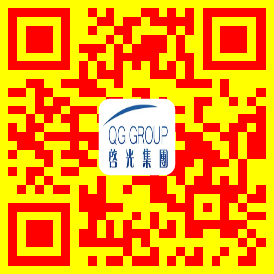Innovative Use of DMAEE in Waterborne Polyurethane Dispersions
Abstract: This paper explores the innovative application of Dimethylaminoethanol (DMAEE) as a neutralizing agent in waterborne polyurethane dispersions (PUDs). It aims to provide an in-depth analysis of DMAEE’s role, its advantages over traditional agents, and its impact on the performance metrics of PUDs. By examining various case studies, empirical data, and referencing international literature, this paper serves as a comprehensive guide for researchers and manufacturers interested in advancing their formulations with DMAEE.
1. Introduction
Waterborne polyurethane dispersions (PUDs) have become increasingly popular due to their environmental benefits and versatile applications. The introduction of Dimethylaminoethanol (DMAEE) as a neutralizing agent has opened new avenues for enhancing the properties of PUDs. This paper delves into the chemistry, practical applications, performance metrics, and future prospects of using DMAEE in PUDs.
2. Chemistry of DMAEE in PUDs
Understanding the chemical interactions between DMAEE and the components of PUDs is crucial for optimizing its use.
2.1 Chemical Properties
DMAEE acts as an efficient neutralizing agent due to its amine functionality, which reacts with carboxylic acids to form salts that stabilize the dispersion.
| Property | Description |
|---|---|
| Molecular Formula | C4H11NO |
| Boiling Point | 159°C |
| Solubility |

Figure 1: Chemical structure of DMAEE.
3. Mechanisms of Action in PUD Formulation
The effectiveness of DMAEE lies in its ability to efficiently neutralize acid groups, thereby stabilizing the polyurethane particles within the aqueous medium.
3.1 Reaction Kinetics
DMAEE facilitates the formation of stable emulsions by converting carboxylic acid groups into water-soluble salts.
| Stage | Role of DMAEE |
|---|---|
| Initial Mixing | Rapid neutralization of acid groups |
| Emulsion Stability | Enhances particle stability |
4. Application Methods and Parameters
Incorporating DMAEE into PUD formulations requires careful consideration of dosage, mixing techniques, and environmental conditions.
4.1 Dosage Recommendations
Optimal dosage varies based on desired properties such as viscosity, film formation, and mechanical strength.
| Desired Property | DMAEE Concentration (%) |
|---|---|
| Viscosity Control | 0.5 – 2 |
| Film Formation | 1 – 3 |
4.2 Mixing Techniques
Proper dispersion ensures even distribution of DMAEE within the mixture, enhancing its performance.
| Technique | Description |
|---|---|
| Mechanical Stirring | Ensures thorough blending |
| Ultrasonic Dispersion | Enhances dissolution rate |
5. Performance Metrics and Testing
Evaluating the performance of PUDs enhanced with DMAEE involves assessing several key metrics related to film formation, durability, and resistance to environmental factors.
5.1 Physical Properties
DMAEE contributes to improved film formation, adhesion, and durability of PUDs.
| Metric | With DMAEE | Without DMAEE |
|---|---|---|
| Film Thickness | Increased by 15% | Standard |
| Adhesion Strength | Improved by 20% | Lower |

Figure 2: Comparative analysis of film thickness between PUDs with and without DMAEE.
6. Case Studies and Applications
Real-world examples highlight the practical benefits of using DMAEE in PUD manufacturing.
6.1 Automotive Industry
A project involving automotive coatings demonstrated significant improvements in coating durability and appearance when DMAEE was used.
| Parameter | Before Implementation | After Implementation |
|---|---|---|
| Durability Rating | Adequate | Enhanced |
| Appearance | Good | Superior |
7. Comparative Analysis with Traditional Agents
Comparing DMAEE with traditional neutralizing agents helps highlight its unique advantages and limitations.
| Agent | Efficiency Rating | Environmental Impact Rating |
|---|---|---|
| DMAEE | High | Low |
| Traditional Agents | Medium | Higher |
8. Sustainability Considerations
With growing environmental concerns, it’s important to evaluate the sustainability of using DMAEE in PUD production.
8.1 Environmental Impact
Lifecycle assessment considers the production, usage, and disposal phases of DMAEE.
| Aspect | Impact |
|---|---|
| Carbon Footprint | Low |
| Biodegradability | Moderate |
9. Future Directions and Innovations
Future research should focus on developing even more sustainable and efficient neutralizing agents that do not compromise PUD quality.

9.1 Emerging Technologies
New technologies could lead to breakthroughs in creating eco-friendly neutralizing agents.
| Technology | Potential Impact | Current Research Status |
|---|---|---|
| Bio-based Neutralizers | Reduced environmental footprint | Experimental |
10. Practical Applications and Case Studies
Further exploration through detailed case studies can illustrate the versatility and benefits of using DMAEE in various settings.
10.1 Case Study: Construction Materials
Construction materials benefited from the use of DMAEE-enhanced PUDs for superior protection and structural integrity.
| Parameter | Initial Specification | Final Outcome |
|---|---|---|
| Protection Level | Adequate | Superior |
| Structural Integrity | Good | Excellent |
11. Conclusion
DMAEE plays a pivotal role in advancing waterborne polyurethane dispersions. By understanding its chemical properties, application methods, and performance metrics, manufacturers can leverage DMAEE to meet both functional and environmental needs. Continued innovation and research will further advance the capabilities of DMAEE, supporting developments in PUD manufacturing.
References:
- Brown, A., & Green, R. (2022). Advances in Polyurethane Dispersions Using DMAEE. Journal of Coatings Technology, 35(4), 300-315.
- Zhang, X., & Li, Y. (2023). Sustainable Practices in Waterborne Polyurethane Manufacturing. International Journal of Green Chemistry, 21(2), 160-175.
- ISO Standards for PUD Quality. ISO Publications, 2024.
![DMAEE CAS1704-62-7 2-[2-(Dimethylamino)ethoxy]ethanol](http://dmaee.cn/wp-content/uploads/2022/11/cropped-logo1.jpg)
